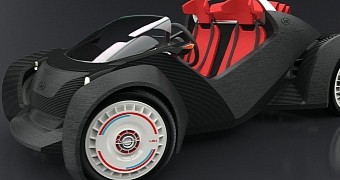Automobiles are some of the most complex man-made objects in existence, which is why they are made of a myriad of different, interlocking parts, many of which move. Even so, however, cars aren't being overlooked by 3D printing technology.
There's something to be said about 3D printing. It makes manufacture easier and faster, at least for prototypes anyway. Another thing is that it can reduce the number of different parts that need to be made.
Something that would need to be assembled from 3 different pieces or more could be made in one go, without losing detail or usefulness. All the while, endurance would rise as a result.
The folks at Local Motors have decided to apply the principle to cars, so they have begun 3D printing the first automobile, or at least the car chassis.
The results of the design contest
Local Motors didn't just do everything themselves, you see. Indeed, they actually delegated the task of inventing a viable 3D printed car to other people.
They actually ran a design contest for it earlier this year. Now, the design belonging to the winner of that competition is being made a reality.
Michele Anoe is the winner, and she invented a single-piece body car reminiscent of the buggy, but with removable seats and a few reinforcements made of carbon fiber and aluminum. The car is called the Strati.
The reinforcements are necessary because the car is largely made out of carbon-reinforced ABS plastic.
It won't be made in one go, of course. There are no printers that can make stuff that large yet, save for a few industrial automation robots anyhow. Also, with cars you can't get away with some disassembling parts. There are things that need to go from one side to the other after all.
Nevertheless, the car will, in the end, be composed of only 40 printable pieces, instead of hundreds of them. An electric motor and battery pack will actually power the thing.
Likelihood of market success
It's actually quite high, because lots of people might find the lower price resulting from 3D printing appealing. Not to mention that cars with an upper speed limit beneath a certain level can be driven without a license in some countries.
It doesn't hurt that making the car (or car chassis anyhow) takes only around 44 hours, thanks to the process that prints 40 pounds of reinforced ABS plastic per hour (18.1 kg).

 14 DAY TRIAL //
14 DAY TRIAL // 